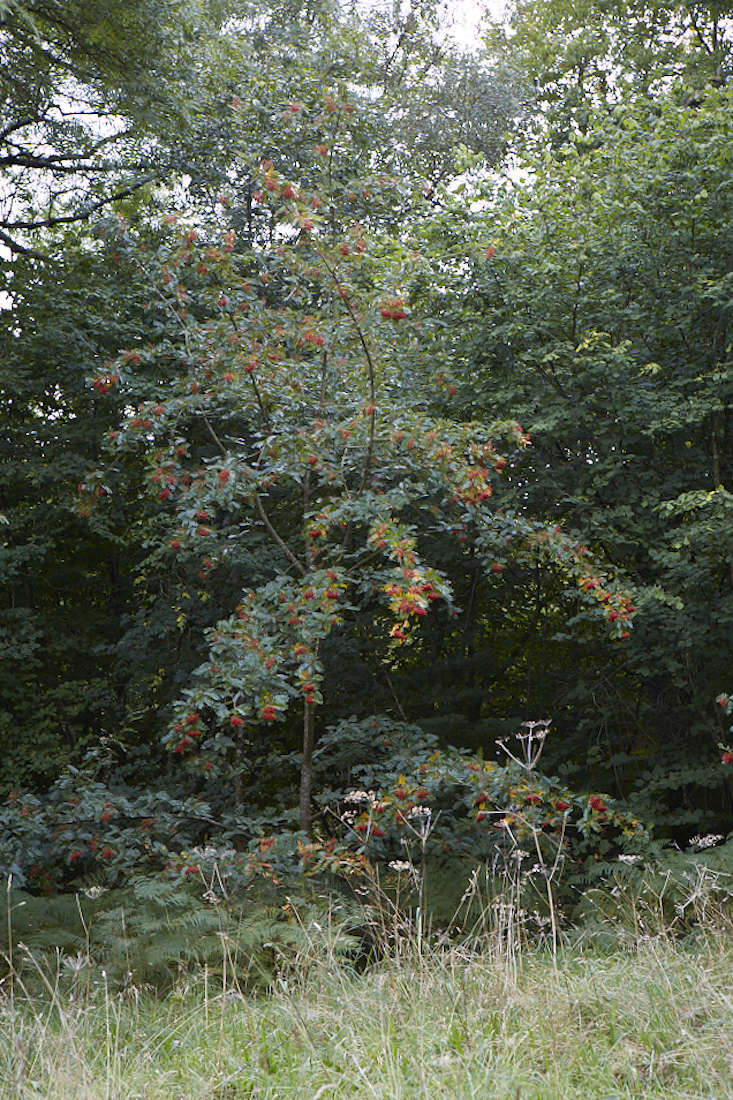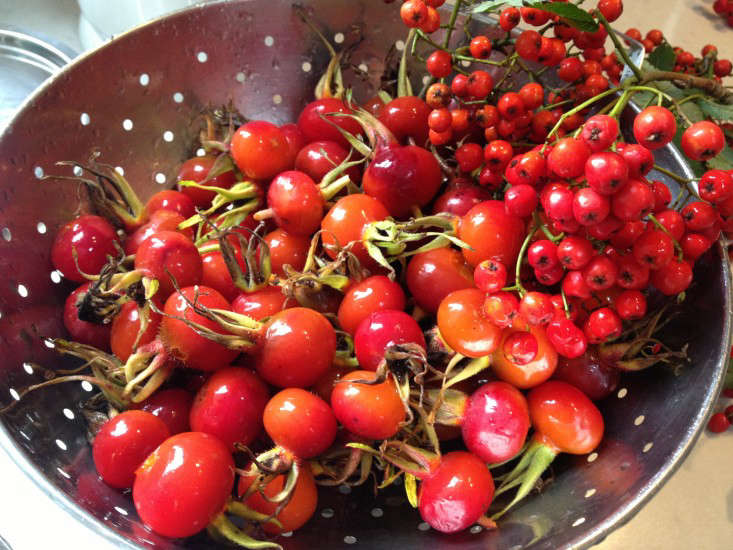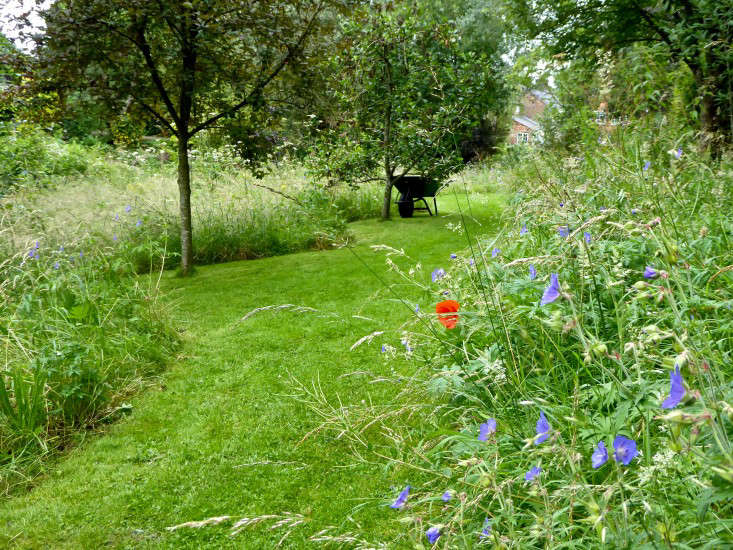Oh, the misty, balmy gorgeousness of early autumn. Or the fall, depending on which side of the Atlantic you are reading from. Is there anything more beautiful? When it is still balmy like this? While it is still balmy and all that is needed is a bit of a jumper and a scarf, you can forgive summer for coming to an end because what it has sent us as a replacement is indeed very civilized and rather pretty to look at. Soft light, crisp mornings, balmy afternoons. Plants splaying, collapsing, beginning to look crunchy and cooked. An abundance of hips, berries, apples, pumpkins. Tawny oranges, yellows, purples, and reds. It is splendid.
It will of course ruin it all by starting to rain and go wintery in a few weeks but until then, all seems well with the world. It is also the moment, in this in-between land of autumn, when I find myself enamored of trees and shrubs that had otherwise been merrily passing me by unnoticed for the rest of the year. I had been doing my thing, they had been doing theirs, and we rarely gave each other a second thought. Until the crispness and balminess happens and then I suddenly look up and think, goodness I do LOVE a rowan.

Above: Photograph by Christine McIntosh via Flickr.
Sorbus aucuparia, commonly known as a rowan or mountain ash (although it is entirely unrelated to an ash tree), is one you will most often see knocking about and is a really fantastic tree for a small urban garden. It is of course perfect for any garden, but it is one of those small but perfectly formed star performers that have such an extended period of interest that it is positively criminal not to have one whatever the size of your garden. A 10-liter pot of Sorbus aucuparia is £37.99 from Crocus. For US readers, Cold Stream Farm sells Sorbus auruparia trees in range of sizes, starting at $3.90.

Above: Photograph by Britt Willoughby Dyer.
A conical or rounded tree, it has lovely lance shaped leaves, sharply toothed and then pretty corymbs of white flowers in spring. It is not the most splendid display, and what with all the other blossoms about, it might pass you by.
However, come the autumn, you will be ever so pleased you planted one. In the vivid autumn light they come into their own. A bonanza of bright orangey red berries that the birds go bonkers for, and then later the leaves themselves also turn red and yellow giving a final splendid show before they drop. S acuparia ‘Cardinal Royal’ is a very vigorous, heavy fruiting variety, ‘Fastigiata’ has a more dense, upright habit with dark red berries while var. xanthorcarpa has yellow/orange berries and a spreading shape.

Above: Photograph by Rowan Collins via Flickr.
As a rule, they do not enjoy shallow caulk and like well-drained soil, full sun or dappled shade. They cope well on an exposed site (they do grow on mountains after all) and generally do not need much maintenance. Get some advice from a nursery that you are buying from as to the best one for your garden, but I promise, come the fall, you will look up and think “goodness, but I do LOVE my rowan.”

Above: Rosehips and rowan berries; photograph by Clemmie Hambro.
As a side note, I now love rowan even more since last week when I made the most delicious rosehip and rowan jelly. It hasn’t set brilliantly (I think a cooking apple or two would have increased the pectin levels), but it is delicious amber nectar that I dribble on my toast each morning. I highly recommend giving it a go.
Want to follow Clemmie Hambro’s adventures in the garden? See An English Gardener’s Diary and Get a Grip on Spring.
Finally, get more ideas on how to successfully plant, grow, and care for rowan tree with our Rowan Tree: A Field Guide.
Interested in other types of trees? Get more ideas on how to plant, grow, and care for various trees (specimen, deciduous, evergreen) with our Trees: A Field Guide.














Have a Question or Comment About This Post?
Join the conversation (1)